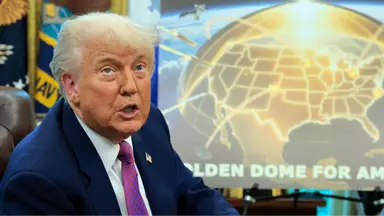After President Donald Trump revealed his plans for developing a military defense program which will be know as the ‘Golden Dome’, a deep-dive has been taken into the true cost of sending US weapons to space.
The reason for wanting to splash $175 billion of taxpayers money on the program comes after years of warning from the Pentagon that the US was falling behind, with both Russia and China already transporting weapons to orbit.
However, building up its armoury and defense in space isn’t an easy fix, with the 78-year-old president explaining to reporters from inside the Oval Office on Tuesday (May 20), that the ‘Golden Dome’ would be ‘fully operational before the end of my term’, which ends in 2029.
While we’ve already reported the timeline, why it might be necessary, Musk’s potential involvement and China’s response… we can now dive a bit deeper into the cost.
To help get things going, the Republican POTUS has requested $25 billion from the coffers be made available for the program in his proposed tax break bill – which is moving through Congress.
Speaking at a Senate hearing last Tuesday (May 13), Lt. Gen. Robert Rasch – who currently serves as the joint program officer for the Guam Defense System, explained how incorporating a small ‘Golden Dome’ for the US island territory would cost around $8 billion.
Mainland America is roughly 17,328 times larger than the Western Pacific island – so the true cost of the Trump administration providing an integrated air and missile defense system could cost way more than $175 billion.


As part of the ‘Golden Dome’ mission, hundreds of satellites will be launched into orbit (Getty stock)
Senator Angus King, of Maine, extrapolated the $8 billion figure and multiplied it by the number of cities in the US that have the same amount of people or more living in them than the entire population of Guam, which is 779.
By King’s methodology, the ‘Golden Dome’ is estimated to cost more than $6 trillion – $6,232,000,000,000 to be precise.
That calculation is 35 times more than Trump’s initial estimation.
However, it is important to remember that that figure has simply been extrapolated from Guam’s military defense system, that is earmarked for completion in 2031, which the Golden Dome will not be a carbon copy of.
Using a similar approach, The Hill crunched the numbers and recorded a far more modest number of $119 billion – a figure the outlet worked out by calculating Guam’s area in square miles relative to the US – which is 14.86 times larger.
Meanwhile, the Congressional Budget Office has estimated that space-based components of the program alone could cost as much as $542 billion over the next 20 years.
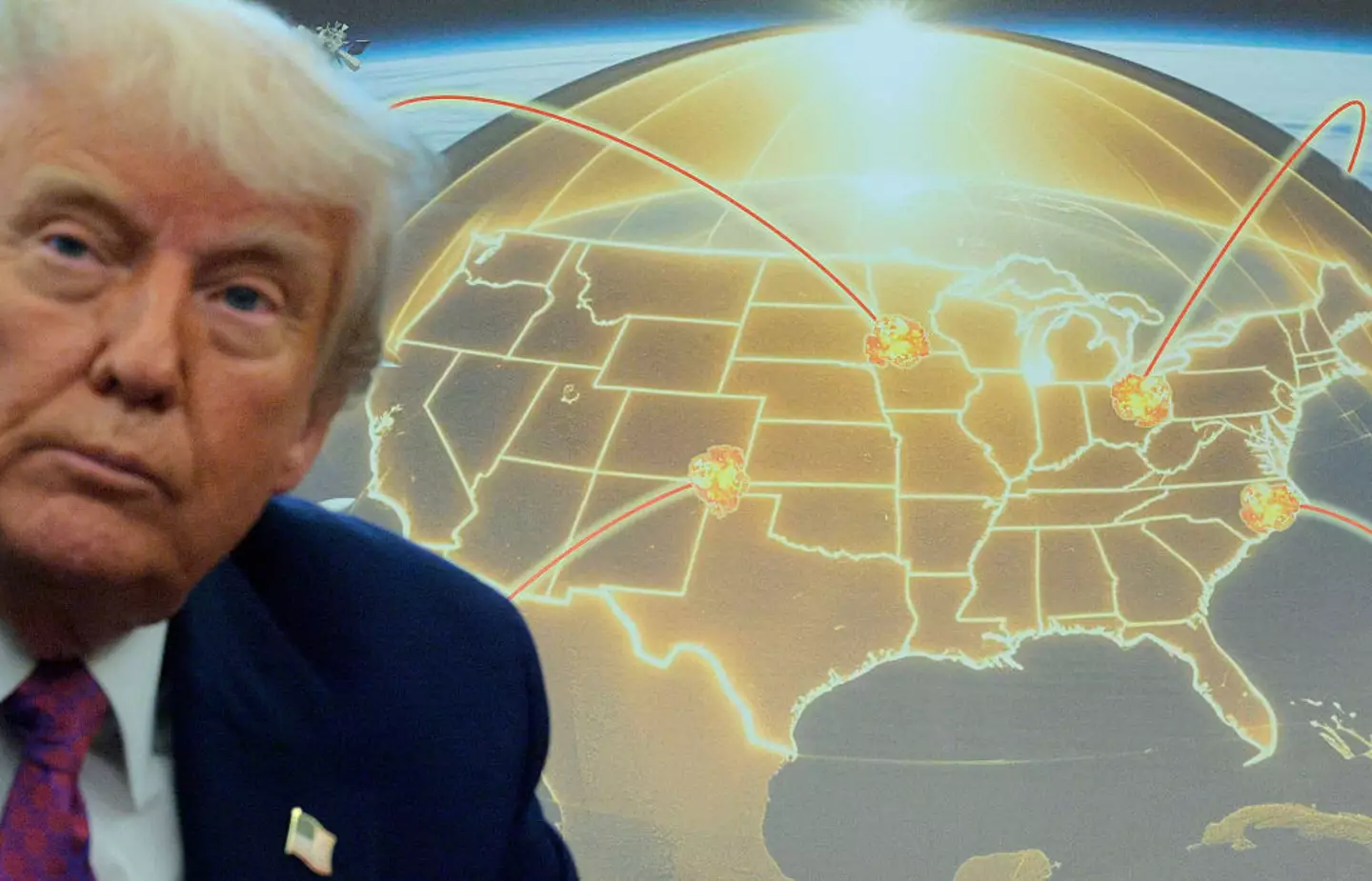

President Donald Trump spoke to reporters in front of a map of his proposed ‘Golden Dome’ missile defense system (Chip Somodevilla/Getty Images)
It’s reported that there are medium, high and ‘extra high’ choices for developing options within the program, an official said as reported by PA News Agency.
The differences between the three options would essentially depend on how many satellites, sensors, and space-based interceptors are bought.
So, how much it would really cost is unclear as of yet, but it is likely to cost much more than $175 billion.
Featured Image Credit: Getty Images/Chip Somodevilla
Topics: Donald Trump, Politics, Technology
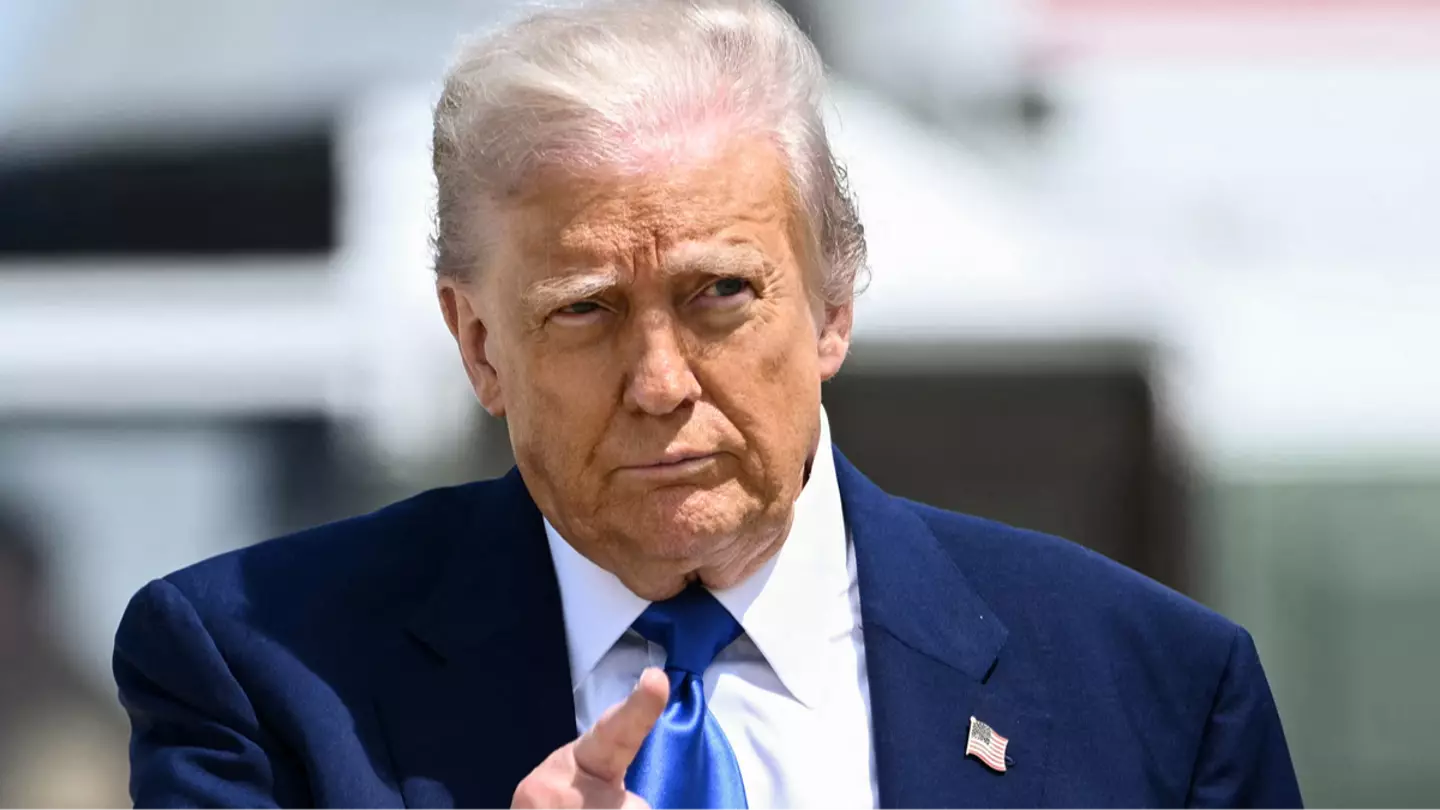

Donald Trump has announced a ‘Golden Dome’ missile defence program revealing who’s set to be involved, an anticipated timeline, and why it’s all necessary.
On May 20, Trump outlined his ideas for a $175 billion ‘Golden Dome’ missile defence program while speaking to reporters from the Oval Office in the White House.
The goal of the program? To help the US to intercept missiles ‘even if they are launched from space‘.
Current vice chief of space operations, General Michael Guetlein, is set to oversee the progress of the Golden Dome and – shockingly – the POTUS’ right-hand man Elon Musk is also potentially set to be involved.
Here’s a breakdown of it all for you…
What is the Golden Dome and why is it necessary?


Donald Trump revealed plans for the Golden Dome on May 20 (Chip Somodevilla/Getty Images)
China and Russia developing new, advanced missiles hasn’t sat well with the US. The two countries have already put offensive weapons in space – including satellites that can disable critical US satellites – meaning the US is subsequently vulnerable to attack.
Following warnings from the Pentagon that updating countermeasures is a much-needed step, the POTUS has since decided to do something about it.
Essentially, the Golden Dome program is set to strengthen the US’ ability to detect and stop missiles at four specific stages of a missiles’ launch and journey:
- Before a launch
- During the earliest stage of a missile’s flight
- During the middle of a missile’s course
- During the final minutes as a missile approaches a target
Head of the US Space Force, General Chance Saltzman, said the Golden Dome and its weapons ‘represent new and emerging requirements for missions that have never before been accomplished by military space organizations’.
And Trump has an ambitious plan for how long the program should take to set up.


The Golden Dome is a missile defense system (Chip Somodevilla/Getty Images)
Trump’s timeline for the Golden Dome
Trump’s presidency is set to come to an end in 2029 – as long as he doesn’t try and find a loophole to run for a third time that is.
And during Tuesday’s press conference, he said he hopes the Golden Dome will be ‘fully operational before the end of [his] term’.
The president also detailed an initial spend of $25 billion to begin work on the program.
The system is reported as being set to cost $175 billion to create – and it could cost the US an even heftier amount in the long-run.


Trump hopes to achieve the program before his second term comes to an end (Chip Somodevilla/Getty Images)
The expected cost of the Golden Dome
It’s reported there are medium, high and ‘extra high’ choices for developing options within the program, an official said as reported by PA News Agency.
The differences between the three options would essentially depend on how many satellites, sensors, and space-based interceptors are bought.
The Congressional Budget Office has estimated that space-based components of the program alone could cost as much as $542 billion over the next 20 years.
On Tuesday, newly confirmed Air Force Secretary Troy Meink noted to senators there’s not actually any money currently available for the project yet with the Golden Dome ‘still in the conceptual stage’.
But where does Elon Musk come into all of it?


The program could cost the US as much as $542 billion over the next 20 years (Jim WATSON / AFP) (Photo by JIM WATSON/AFP via Getty Images)
Elon Musk’s potential involvement in the Golden Dome
Well, ‘six people familiar with the matter’ told Reuters that Musk’s SpaceX alongside two partners are ‘frontrunners’ to help build the program.
Representatives of SpaceX alongside software maker Palantir and drone builder Anduril reportedly met with Trump administration officials alongside the Pentagon to make their pitch.
The pitch? To build and launch between 400-1,000 satellites around the globe to detect missiles alongside another 200 armed with missiles or lasers themselves to stop enemy missiles.
UNILAD has contacted SpaceX for comment.
So, what has China said about the US’ Golden Dome plan?


Elon Musk’s SpaceX has reportedly already pitched to get involved in the program (ANGELA WEISS/AFP via Getty Images)
China’s response to the Golden Dome
Not long after Trump’s announcement of the program, Chinese foreign ministry spokesperson Mao Ning issued a warning.
Mao said the Golden Dome carries ‘strong offensive implications’, and increases the risk of outer space becoming militarized.
He also argued it heightens the risks of an arms race.
The spokesperson said: “The United States, in pursuing a ‘US-first’ policy, is obsessed with seeking absolute security for itself. This violates the principle that the security of all countries should not be compromised and undermines global strategic balance and stability. China is seriously concerned about this.”
Mao even urged Washington to ditch the development of the Golden Dome altogether.
Although, with Trump at the helm, I wouldn’t hold my breath…
Featured Image Credit: Getty Images/BRENDAN SMIALOWSKI
Topics: China, Donald Trump, Elon Musk, Money, Politics, Space X, US News, World News
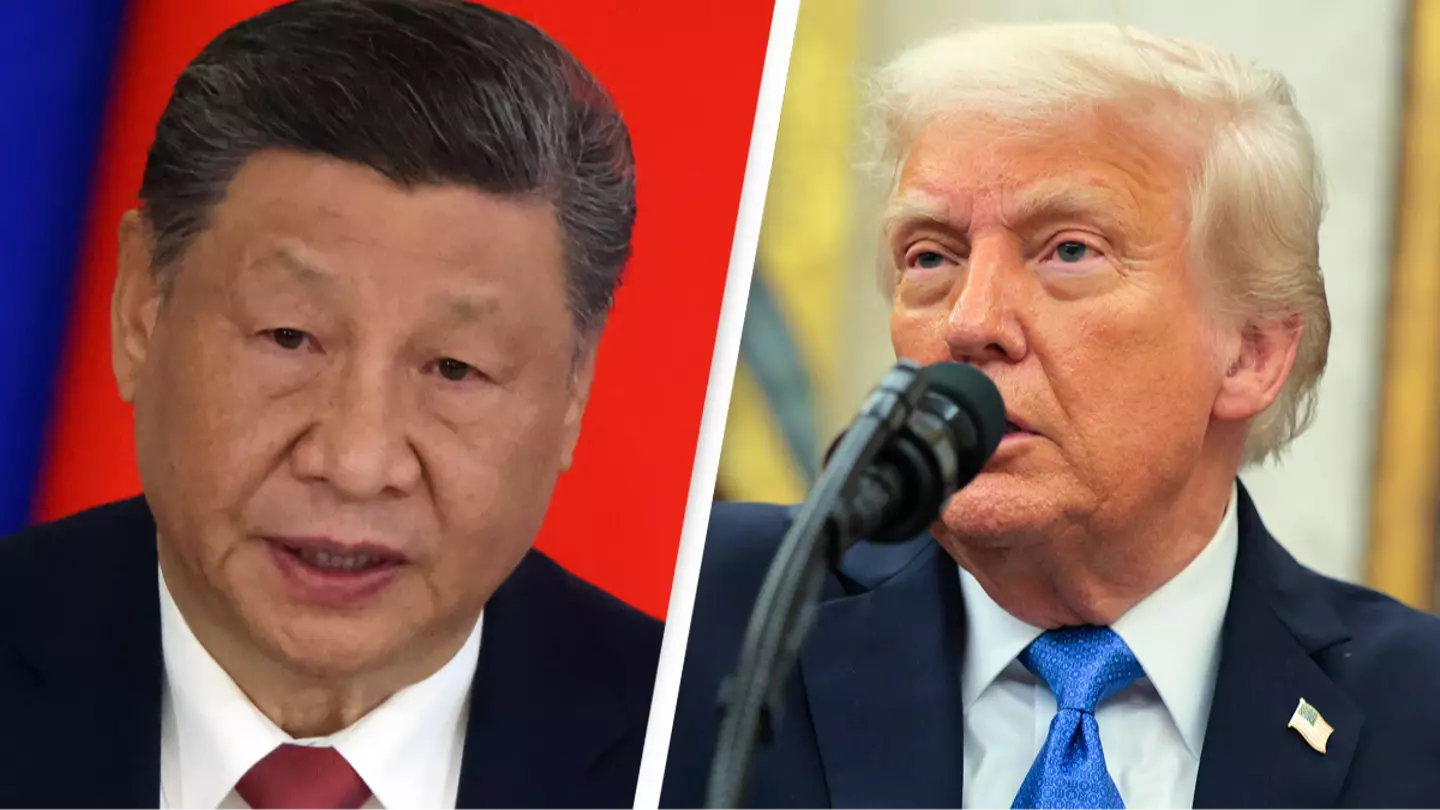

China has issued a warning to Donald Trump and the United States after the president announced his plans for a future ‘Golden Dome’ missile defence programme.
Trump outlined his ideas for the latest defence plan from the Oval Office in the White House on Tuesday (May 20), telling reporters that he hopes to move quickly on the idea which will put US weapons in space for the very first time.
The goal of the Golden Dome is to help the US to intercept missiles – ‘even if they are launched from space’, the POTUS explained.
General Michael Guetlein, who currently serves as the vice chief of space operations, will be in charge of overseeing the progress of the Golden Dome, which is set to cost $175 billion dollars.
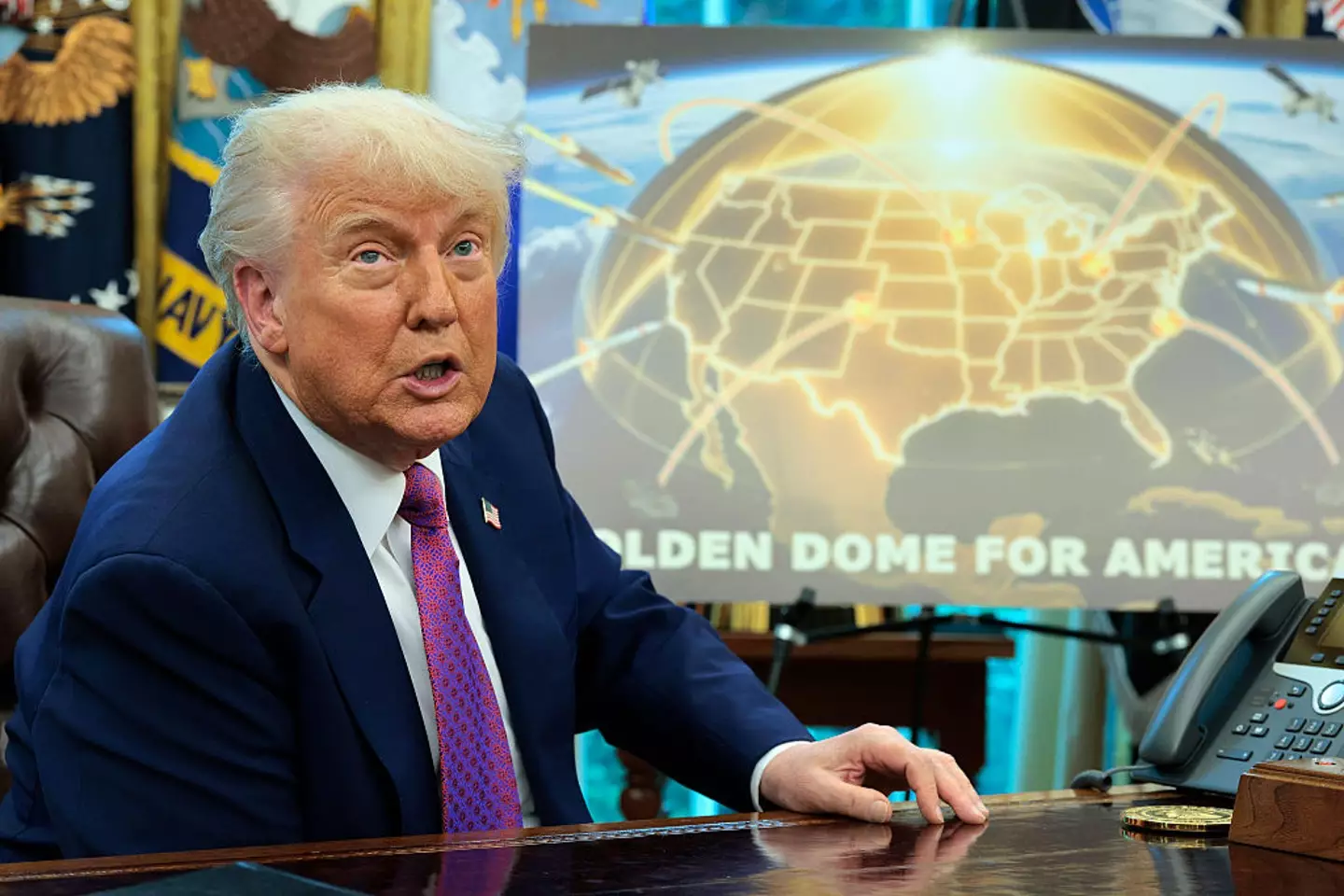

The Golden Dome intends to put US weapons in space (Chip Somodevilla/Getty Images)
What is the Golden Dome?
Following warnings from the Pentagon about the new, advanced missiles developed by China and Russia, the focus of the Golden Dome is to both detect and stop missiles at four specific stages:
- Before a launch
- During the earliest stage of flight
- In the middle of their course
- In the final minutes as they approach a target
Planners at the Pentagon have spent months coming up with options for interceptors, with one US official cited by the PA News Agency explaining that they came up with ‘medium, high and extra high choices’ based on cost, with differences varying on satellites, sensors, and space-based interceptors.
The Congressional Budget Office has estimated that space-based components of the programme alone could cost as much as $542 billion over the next 20 years, with Trump requesting an initial $25 billion for the programme.
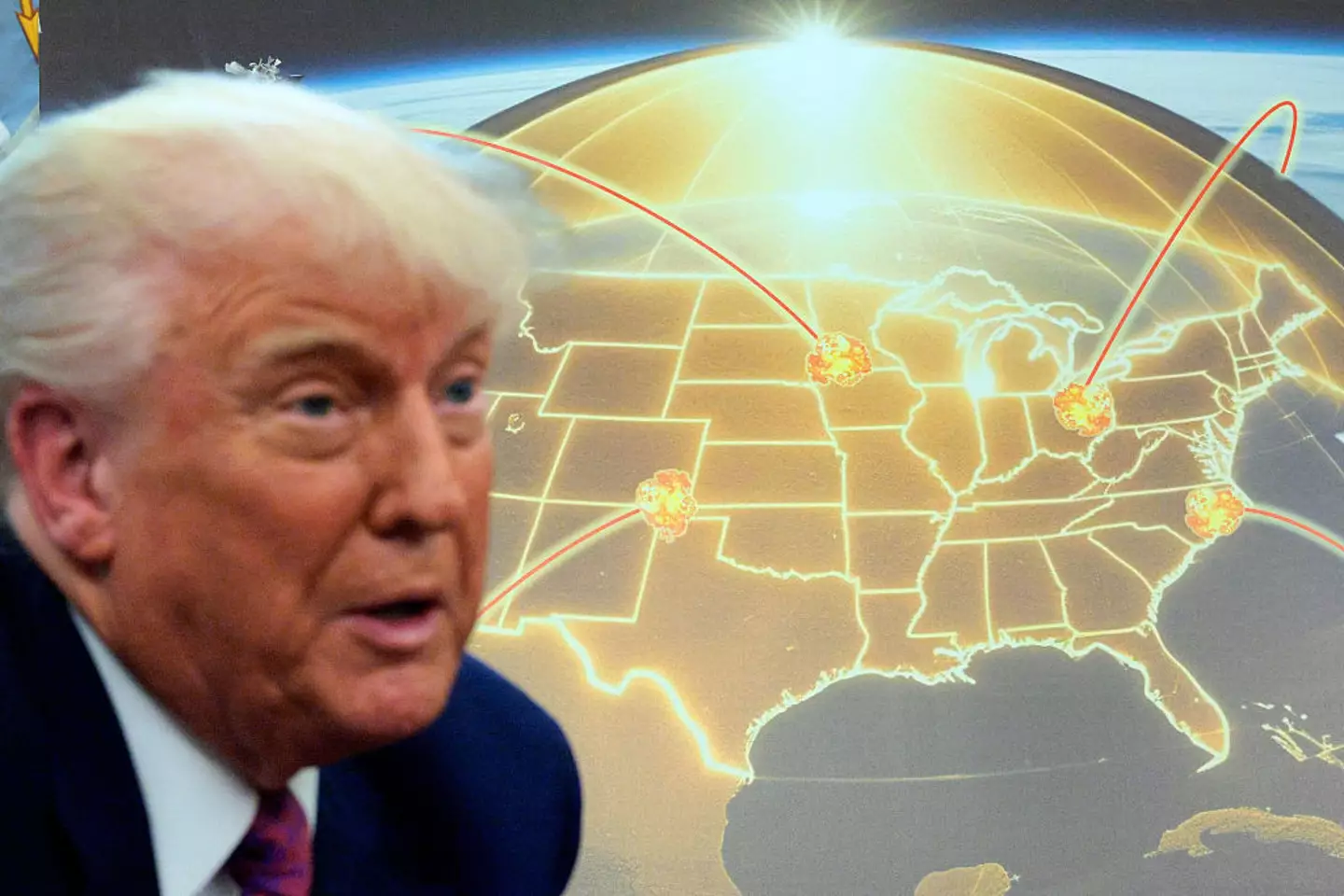

The Golden Dome is set to cost millions of dollars (Chip Somodevilla/Getty Images)
What has China said about the Golden Dome?
After news of Trump’s plans came to light, Chinese foreign ministry spokesperson Mao Ning issued a warning on the implications and potential outcomes of the Golden Dome.
Mao said the Golden Dome carries ‘strong offensive implications’, and increases the risk of outer space becoming militarized.
On top of that, Mao said it also heightens the risks of an arms race.
The spokesperson said: “The United States, in pursuing a ‘US-first’ policy, is obsessed with seeking absolute security for itself. This violates the principle that the security of all countries should not be compromised and undermines global strategic balance and stability. China is seriously concerned about this.”
Mao went as far as urging Washington to abandon the development of the Golden Dome altogether.


China has urged Washington to abandon the idea (Chris Kleponis/CNP/Bloomberg via Getty Images)
Why does the US need the Golden Dome?
Since China and Russia have already put offensive weapons in space, including satellites that can disable critical US satellites, the US has been left vulnerable to attack.
General Chance Saltzman, head of the US Space Force, has said that the Golden Dome and its weapons ‘represent new and emerging requirements for missions that have never before been accomplished by military space organizations’.
However, Air Force Secretary Troy Meink has said the programme is ‘still in the conceptual stage’ for the time being.
Featured Image Credit: Getty Images/Contributor/Getty Images/Chip Somodevilla
Topics: Donald Trump, China, Politics, Military


China has issued an immediate response to Donald Trump’s extraordinary 145 percent tariff on Chinese goods, with the trade war not seeing an end in sight.
Ever since President Trump returned to the White House for a second term in January, it has been tariffs, tariffs and more tariffs.
With April 2 branded ‘Liberation Day‘ for the US, Trump unveiled a series of tariffs affecting countries across the globe, with China one of the worst hit.
China has ended up with a whopping 145 percent tariff ‘effective immediately’ after it tried to hit back with its own retaliatory tariffs.
“At some point, hopefully in the near future, China will realize that the days of ripping off the U.S.A., and other Countries, is no longer sustainable or acceptable,” Trump wrote on Truth Social.


Donald Trump has hiked the tariffs on China (Anna Moneymaker/Getty Images)
China’s commerce ministry has since warned the US to ‘take a big step back to correct its mistakes’ and ‘return to the right path of mutual respect’.
And on April 11, Trump’s administration seemingly did take a step back, announcing smartphones, computers and other certain products would be exempt from the hiked tariffs, including Chinese goods.
But on Sunday (April 13), US Commerce Secretary Howard Lutnick told ABC News that the exemptions may only be temporary and a ‘semiconductor tariff’ could be announced soon instead.
China has since hit back with a 125 percent tariff on US-manufactured goods, while it’s also banned its country’s airlines from completing any jet orders from US-based manufacturer Boeing.
All existing orders have been halted, while Chinese airlines have also been ordered to not buy any aircraft parts from Boeing.
The Telegraph reports the Chinese government are working with airlines who lease Boeing jets to assist on potential higher costs.
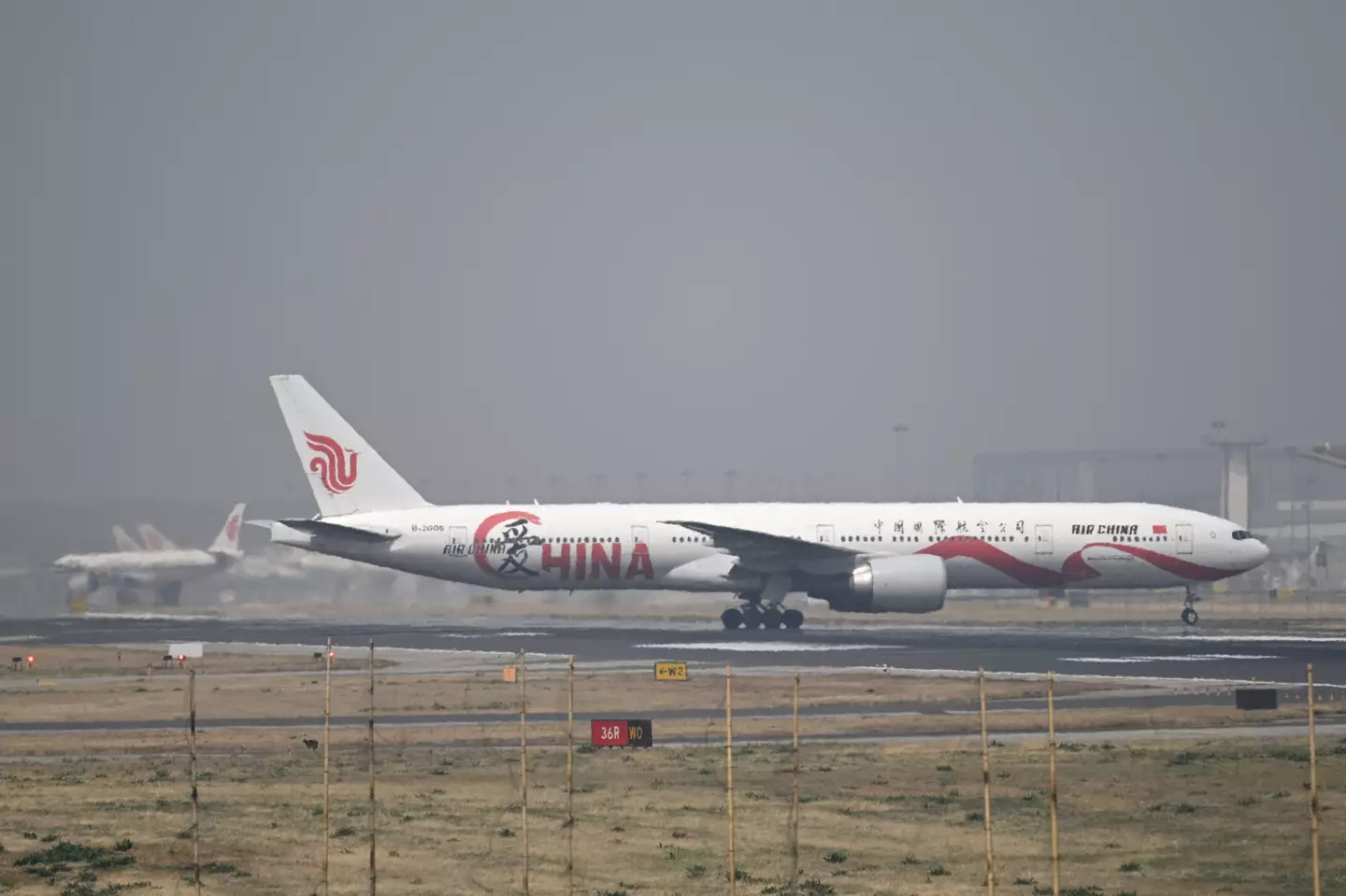

Boeing have been hit as a result of the tariffs imposed by Trump (WANG ZHAO/AFP via Getty Images)
UNILAD has reached out to Boeing for comment.
While the tariffs continue to cause chaos across the globe, Trump doesn’t appear to have any plans on reversing his decisions.
The POTUS resolved on Truth Social: “The Golden Age of America, which includes the upcoming Tax and Regulation Cuts, a substantial amount of which was just approved by the House and Senate, will mean more and better paying Jobs, making products in our Nation, and treating other Countries, in particular China, the same way they have treated us.
“The bottom line is that our Country will be bigger, better, and stronger than ever before. We will, MAKE AMERICA GREAT AGAIN!”
Featured Image Credit: EVARISTO SA/Getty
Topics: Donald Trump, China, Tariffs, US News, Travel
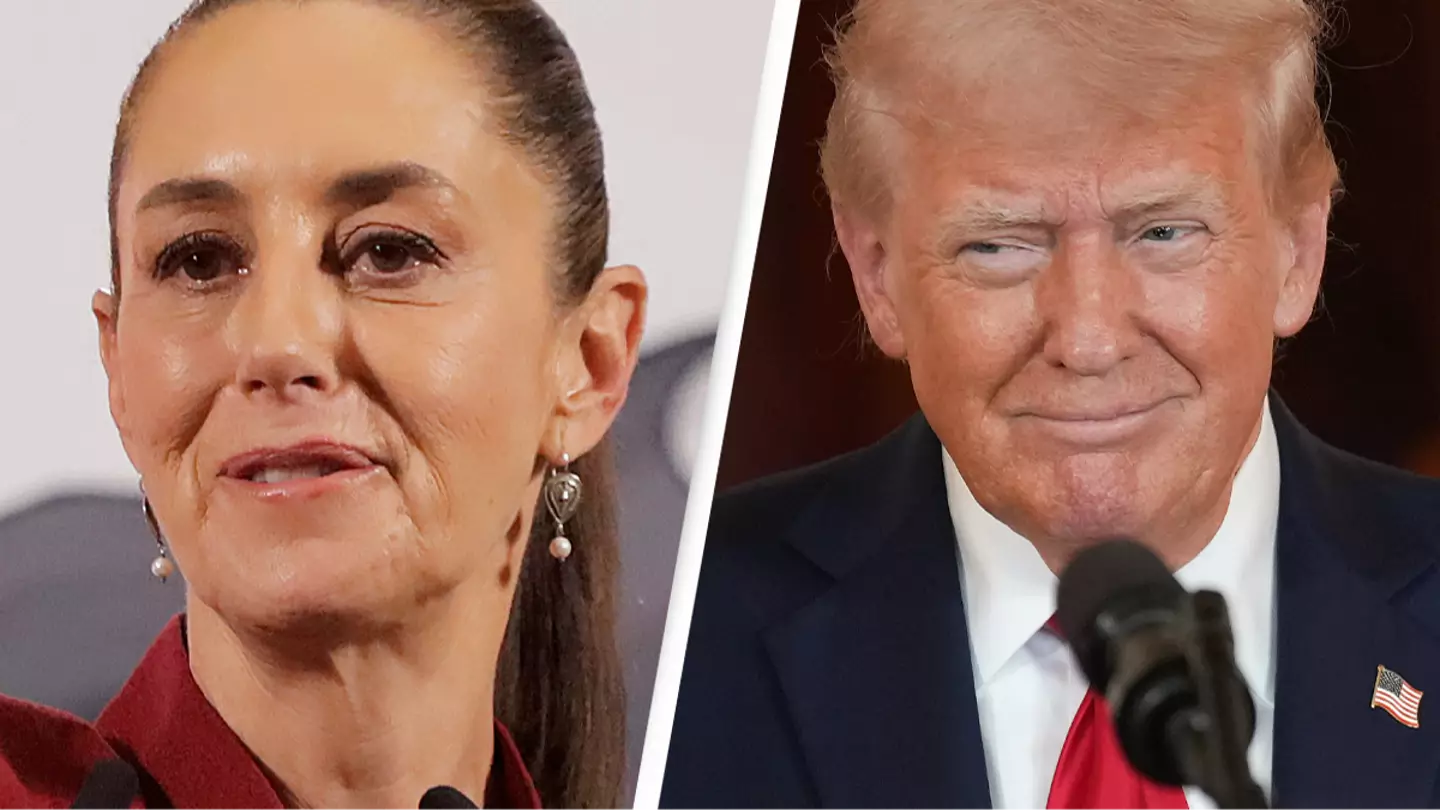

Mexico’s President Claudia Sheinbaum has revealed Donald Trump’s ‘proposition’ to ‘help’ the country with drug trafficking and why she firmly said ‘no’.
With Donald Trump having signed an executive order to rename the Gulf of Mexico alongside having unleashed tariffs on the country too as part of his bid to ‘hold [certain countries] accountable for their promises to halt the flood of poisonous drugs into the US‘, it’s fair to say relations between the President of the US and Mexico’s President Claudia Sheinbaum have been tense.
However, on April 16, the pair had a 45-minute phone conversation which Sheinbaum described as ‘very positive’ despite Trump’s suggestion to send over US armed forces to help battle Mexican drug gangs.
On May 3, Sheinbaum spoke at a university event near the capital and reflected on her call with Trump.
She said: “In one of the calls, Trump said, ‘How can we help you fight drug trafficking? I propose that the US Army come in to help you’.
“And you know what I told him? ‘No, President Trump, the territory is sacrosanct, sovereignty is sacrosanct, sovereignty is not for sale, sovereignty is loved and defended’.”
Doubling down on the response, Sheinbaum continued: “We will never accept the presence of the United States military in our territory.”
She resolved: “We can work together, but you in your territory and us in ours.”
And later that day, White House National Security Council spokesperson James Hewitt addressed the call, too.


Sheinbaum drew the line at US troops coming over (ALFREDO ESTRELLA/AFP via Getty Images)
Hewitt said Sheinbaum and Trump have been working together ‘to achieve the most secure southwest border in history’.
However, he added: “Dangerous Foreign Terrorist Organizations, however, continue to threaten our shared security and the drugs and crime they spread threaten American communities across the country.
“The President has been crystal clear that Mexico must do more do combat these gangs and cartels and the United States stands ready to assist and expand the already close cooperation between our two countries.”
Elsewhere in the phone call, the pair discussed ongoing trade issues.


Trump’s suggestion was quickly shot down (Andrew Harnik/Getty Images)
Sheinbaum took to Twitter on May 1 to write: “I had a very positive conversation with President Trump; we agreed that the Secretaries of Finance and Treasury, as well as Economy and Commerce, will continue working in the coming days on alternatives to improve our trade balance and advance on pending issues for the benefit of both countries.”
While no specific agreement had been made, the Mexican president resolved, as quoted by France24: “The important thing is that we’re working on it, and there’s a desire on the part of the US government and ours to reach even better trade agreements.”
Featured Image Credit: Gerardo Vieyra/NurPhoto via Getty Images/Andrew Harnik/Getty Images
Topics: Donald Trump, Drugs, Mexico, Politics, US News, World News
